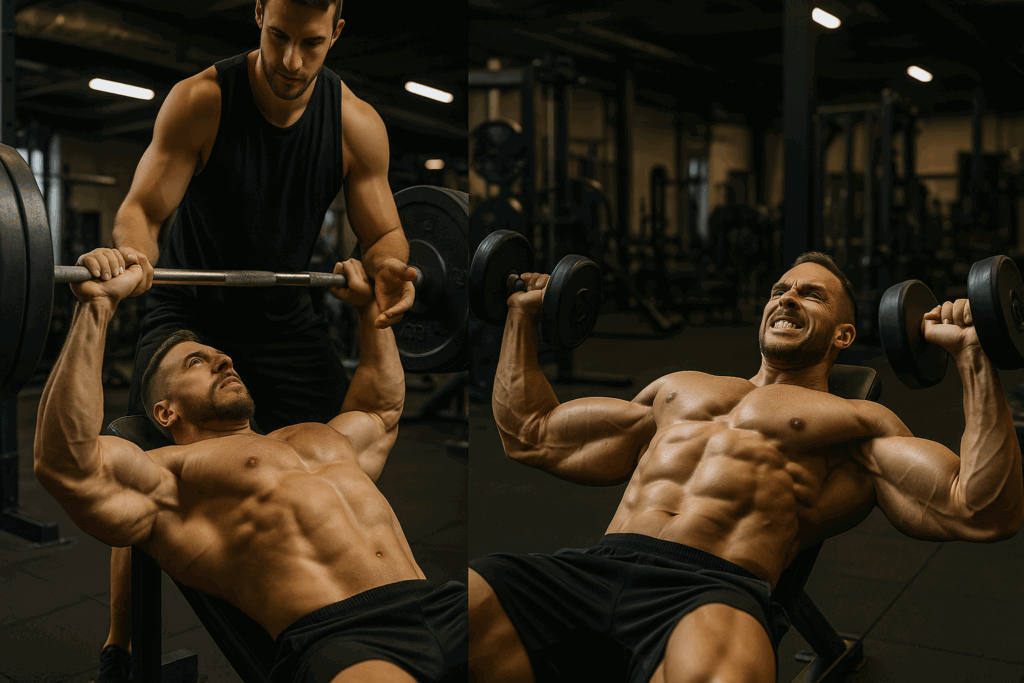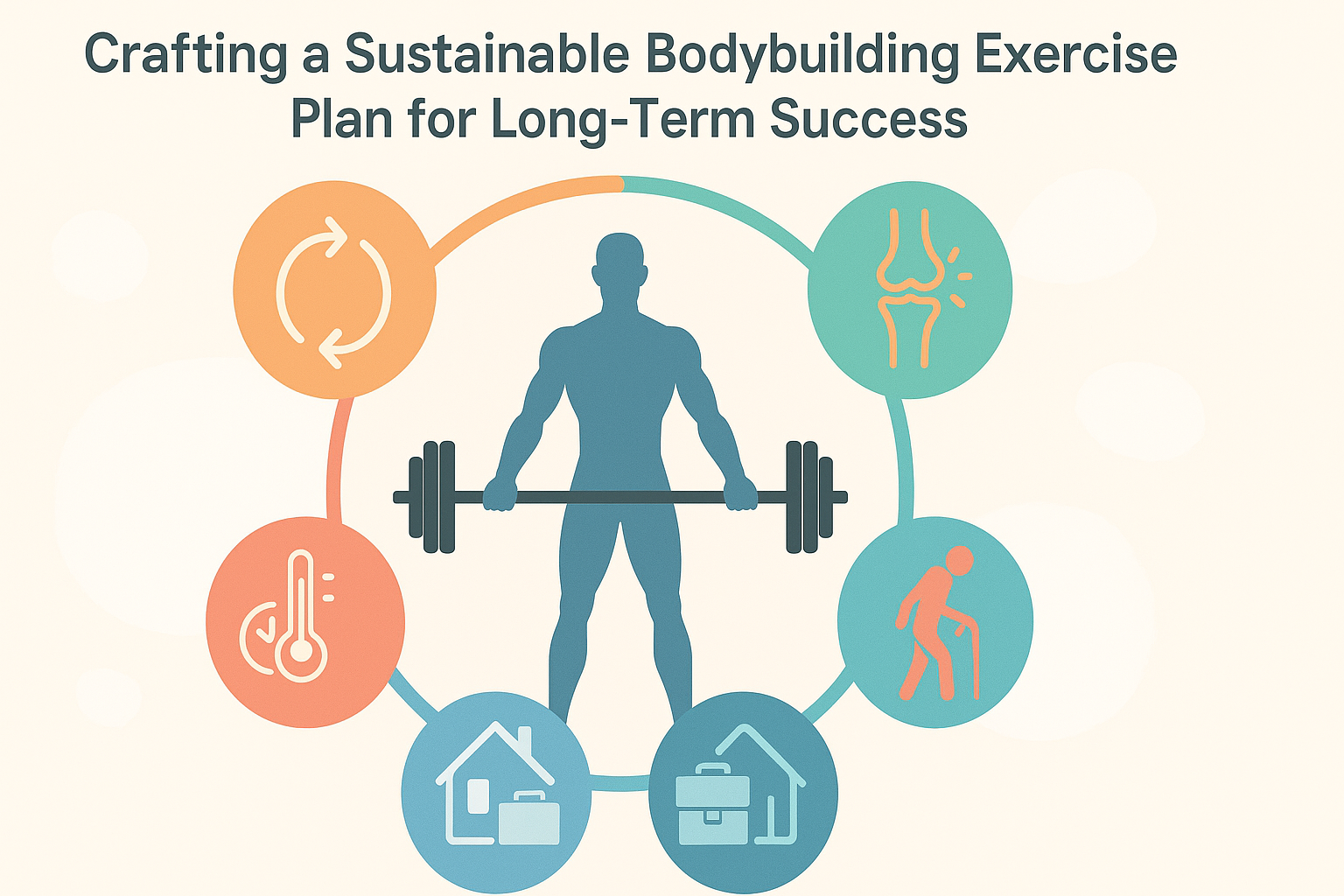Optimizing Recovery in a High-Volume Bodybuilding Routine
Recovery is often misunderstood or underestimated by even the most experienced lifters. In the context of an advanced muscle building program, recovery is not merely the absence of training but a vital component of growth. Every intense session initiates a cascade of microscopic muscle damage, hormonal shifts, and nervous system fatigue. Without adequate recovery protocols, these processes can accumulate to the point of overtraining, leading to regression rather than progression.
Sleep is the cornerstone of recovery, both physiologically and neurologically. Deep sleep stages promote the release of growth hormone, which is crucial for tissue repair and muscle development. For athletes engaged in an intensive bodybuilding training regimen, seven to nine hours of high-quality sleep each night is non-negotiable. Equally important is the concept of sleep hygiene — practices that enhance sleep quality such as limiting screen exposure before bed, maintaining a cool sleeping environment, and sticking to a consistent schedule.

Beyond sleep, active recovery techniques like foam rolling, mobility drills, light cardio, and contrast hydrotherapy can expedite muscle repair and reduce soreness. Massage and myofascial release also help restore blood flow and alleviate stiffness. Implementing these methods weekly can enhance joint mobility and muscular elasticity, reducing the risk of strain or injury. Nutritional timing — particularly post-workout meals rich in protein and carbohydrates — also plays a key role in the recovery cycle, ensuring that muscles receive the substrates needed to rebuild.
Mental recovery should not be ignored. High-intensity training regimens can induce stress, elevate cortisol levels, and tax emotional resilience. Advanced athletes must balance training with activities that support mental well-being — meditation, mindfulness, social engagement, or hobbies unrelated to the gym can all contribute to psychological recovery and help prevent burnout.
You may also like: The Ultimate Hypertrophy Workout Program for Building Strength and Size

Advanced Muscle Building Program Strategies for Lagging Muscle Groups
Even with consistent effort and dedication, most advanced lifters encounter imbalances or underdeveloped muscle groups that fail to grow at the same rate as others. This is where intelligent programming and biomechanical analysis become essential. An advanced muscle building program does not rely on a one-size-fits-all protocol but adapts according to the unique muscular blueprint of the individual.
First, identifying lagging muscles requires honest assessment and objective measurement. Whether through progress photos, strength ratios, or feedback from experienced coaches, determining weak points is the first step. Once identified, these areas must be prioritized in the training week. For example, if hamstrings are underdeveloped relative to quads, placing hamstring-focused exercises at the start of a leg day — when energy and focus are highest — will yield better results.
Second, frequency plays a crucial role. Research suggests that training a muscle group twice or even three times per week can lead to greater hypertrophy than once-weekly sessions, provided that volume is appropriately managed. Therefore, a lagging body part should be trained more often, with varied stimuli including mechanical tension, metabolic stress, and muscle damage. This might mean adding isolation work like hamstring curls to both leg days or performing lateral raises at the end of push and pull sessions to accelerate shoulder growth.
Third, exercise selection and execution matter deeply. A poorly executed compound lift can shift tension away from the target muscle, rendering it ineffective. Advanced trainees benefit from fine-tuning technique, using a full range of motion, and sometimes incorporating machines or cables to maintain constant tension. In some cases, tempo manipulation — slowing the eccentric phase or adding pauses at peak contraction — can dramatically enhance the effectiveness of a lift. For stubborn areas, exercises should be selected based on their ability to maximize mind-muscle connection and elicit strong muscular contractions.

Balancing Strength and Hypertrophy in an Advanced Bodybuilder Programme
While the goal of many bodybuilding programs is to build size, integrating strength work remains essential. A stronger muscle has more potential for growth, and a bodybuilder with superior strength will typically be able to handle greater training loads, which translates to increased hypertrophy over time. The integration of strength and size goals, however, requires a delicate balance to prevent conflicting adaptations.
In an advanced bodybuilding workout plan, this balance can be achieved through concurrent periodization — alternating phases that emphasize either hypertrophy or maximal strength, or incorporating both within the same week. For instance, Monday and Tuesday may focus on lower-rep, high-intensity compound lifts like deadlifts and squats, while Thursday and Friday center around higher-rep isolation and volume-based training for size. This approach preserves nervous system efficiency while continuing to challenge muscle fibers across a broad spectrum of stimulus.
Another strategy is to periodize within a single session. A lifter may begin with a 3–5 rep range on a heavy compound lift to stimulate neural adaptation, followed by accessory work in the 8–15 rep range to maximize hypertrophy. This method, known as daily undulating periodization, has been shown to be highly effective in preventing stagnation and promoting comprehensive development.
It’s important to note that strength-focused lifts require longer rest periods (2–5 minutes) to allow for full recovery and maximal output, whereas hypertrophy training benefits from shorter rest intervals (30–90 seconds) to maintain metabolic stress. An advanced program tailors rest and intensity accordingly, ensuring that each training objective is met without compromise.

The Psychological Demands of an Elite Bodybuilding Training Plan
Physical effort is only one aspect of what makes a bodybuilding program successful. The psychological demands of adhering to an elite-level training and nutrition regimen can be substantial, and navigating these mental challenges is a hallmark of successful bodybuilders.
Mental discipline is essential for consistency, especially when progress plateaus or motivation wanes. Advanced lifters often experience slower, more incremental gains compared to beginners. In this phase, progress may be measured in millimeters rather than inches, making perseverance and patience critical. Goal setting becomes more nuanced — instead of focusing solely on scale weight or mirror changes, athletes might track improvements in muscle symmetry, exercise execution, or recovery quality.
Moreover, body dysmorphia, performance anxiety, and the constant comparison to idealized physiques (especially on social media) can create emotional turbulence. Cultivating a strong internal locus of control — where motivation stems from personal standards and intrinsic goals — helps protect mental well-being. Support from coaches, peers, or therapists can also provide valuable perspective and reinforce a balanced mindset.
Mindset training, such as visualization techniques, self-talk strategies, and cognitive behavioral interventions, has also found a place in the advanced bodybuilding routine. Preparing mentally for intense sessions, visualizing successful lifts, or reframing negative thoughts can directly enhance physical performance and recovery. In this way, the mind becomes a vital training partner — not just a spectator.

Crafting a Sustainable Bodybuilding Exercise Plan for Long-Term Success
The ultimate goal of any bodybuilding exercise plan should be sustainability. The fitness industry is littered with examples of athletes who achieved impressive short-term results, only to burn out or suffer injuries that curtailed their progress. An advanced muscle building program must therefore be built on principles of longevity, injury prevention, and enjoyment.
Rotating exercise selection every few mesocycles prevents overuse injuries and keeps the training stimulus fresh. Maintaining mobility and stability through regular prehab work — such as rotator cuff strengthening, ankle mobility drills, and spinal decompression exercises — ensures that joints remain healthy and functional. Moreover, attention to warm-ups and cooldowns should not diminish as an athlete becomes more advanced; in fact, they become more critical.
Sustainability also depends on balancing training with lifestyle. This includes managing work commitments, family responsibilities, and social life in a way that complements — rather than conflicts with — training goals. A rigid routine that allows no flexibility is rarely sustainable. Instead, adaptable plans that accommodate life’s unpredictability while still prioritizing consistency yield better long-term results.
Moreover, as an athlete ages, programming should evolve. While young lifters might recover quickly from high-frequency, high-volume training, older athletes must prioritize joint health, recovery, and mobility. The best bodybuilding program is not static but evolves alongside the individual — responding to feedback from the body, life changes, and shifting goals.

Integrating Technology and Data Tracking in a Bodybuilding Workout Plan
In today’s digital age, data can play a pivotal role in refining a bodybuilding workout plan. Wearables, apps, and digital platforms now offer detailed insights into sleep quality, heart rate variability, recovery status, and even muscle activation patterns. By leveraging this technology, advanced lifters can make informed decisions that optimize performance and reduce guesswork.
For example, tracking heart rate variability (HRV) can indicate when the body is under stress and needs rest. Logging workout variables — such as sets, reps, and intensity — over time allows for more precise adjustments and ensures progressive overload is maintained. Some platforms even allow for AI-generated insights that detect training trends and suggest modifications to enhance results.
Video analysis of lifts can be particularly helpful for advanced athletes seeking to fine-tune form. Subtle changes in bar path, joint angles, or tempo can have significant effects on muscle engagement and injury risk. By reviewing training footage or using motion-tracking software, lifters can identify inefficiencies and correct them proactively.
In the realm of nutrition, apps that track caloric intake, macronutrient breakdown, and meal timing allow for tighter control and consistency. When combined with blood markers or body composition testing, these tools provide a 360-degree view of progress and make it easier to troubleshoot plateaus or adjust goals.
While technology should never replace experience or intuition, it can enhance them. A smart lifter uses data not as a crutch, but as a compass — guiding their decisions and sharpening their instincts over time.
Frequently Asked Questions: Maximizing Results with an Advanced Muscle Building Program
What makes an advanced muscle building program more effective than intermediate plans?
An advanced muscle building program goes beyond basic training principles by incorporating nuanced strategies like undulating periodization, auto-regulation, and individualized recovery cycles. These programs are tailored to stimulate hypertrophy while minimizing overtraining, often using biomechanically optimized exercises and strategic deloading. Unlike generic plans, they adjust based on real-time feedback from strength metrics, recovery markers, and even sleep quality. Many also utilize advanced methods such as occlusion training or velocity-based training to enhance muscle recruitment. This sophistication makes them far superior to traditional bodybuilding workout routines that often fail to stimulate further growth in seasoned lifters.
How can I integrate strength-focused goals within a hypertrophy-based bodybuilding routine?
Integrating strength goals within a hypertrophy-focused bodybuilding routine requires balancing neural and muscular adaptations without compromising either. A practical approach is to start your workout with low-rep, high-load compound lifts to target strength gains, followed by higher-rep accessory work for hypertrophy. This allows the nervous system to perform optimally before fatigue sets in. In a well-structured bodybuilding training regimen, you can also cycle strength blocks every four to six weeks to ensure continued neural adaptation. Blending both goals keeps your training dynamic and prevents long-term stagnation common in traditional bodybuilding programs.
What role does exercise variation play in a long-term bodybuilding training plan?
Exercise variation is critical in preventing plateaus and reducing the risk of overuse injuries in a bodybuilding training plan. While consistency is essential for progression, repeating the exact same movements for months can lead to adaptive resistance. Strategic variation — such as rotating between barbells, dumbbells, and machines — targets different motor units and muscle fibers. This enhances muscle development and maintains engagement by avoiding monotony. Periodic changes to your bodybuilding lifting schedule also allow for improved biomechanics and movement pattern correction, making it a core component of any effective bodybuilding exercise plan.
How does stress management impact results in an advanced muscle building program?
Chronic stress elevates cortisol levels, which can impair recovery, reduce testosterone production, and ultimately stall muscle growth. Advanced athletes often monitor stress levels using heart rate variability (HRV) or biofeedback apps to optimize their bodybuilding training plan. Incorporating stress management techniques like mindfulness, deep breathing, or even short naps can significantly improve workout quality and recovery efficiency. A high-functioning nervous system enables more productive training sessions, especially within a demanding bodybuilding workout routine. Therefore, managing stress is not a luxury but a necessity in achieving peak performance and sustainable results.
How should nutrition evolve in a long-term bodybuilder programme?
In a long-term bodybuilder programme, nutritional strategies must evolve to match shifting training phases and recovery needs. During mass-building phases, a caloric surplus with balanced macronutrients supports muscle growth and energy output. As the athlete progresses, carbohydrate timing and glycemic index considerations become more important to optimize insulin sensitivity and glycogen replenishment. During cutting cycles, protein intake should remain high while fats and carbohydrates are strategically cycled to preserve lean mass. These adaptations ensure that your bodybuilding program remains effective through various physiological demands and seasonal goals.
What are the most overlooked elements in a bodybuilding workout plan?
Mobility training, sleep hygiene, and mental resilience are often the most neglected aspects of a bodybuilding workout plan. While most lifters focus intensely on load progression and hypertrophy, insufficient attention to joint mobility can result in poor movement mechanics and increased injury risk. Likewise, neglecting sleep diminishes anabolic hormone secretion and slows recovery. Building mental resilience through goal setting, visualization, or journaling can help sustain motivation during challenging periods. A well-rounded bodybuilding training regimen addresses all these factors to ensure optimal, long-term performance and health.
How can technology enhance a bodybuilding workout routine?
Modern technology allows athletes to quantify aspects of their training that were previously subjective. Apps that track training volume, intensity, and rest intervals offer invaluable data to fine-tune your bodybuilding workout routine. Wearables can assess sleep quality, HRV, and caloric expenditure, helping you make more informed decisions about recovery and nutrition. Motion capture tools and video analysis platforms can correct technique flaws, particularly in complex lifts like squats and deadlifts. By integrating tech insights, the best bodybuilding program becomes more precise and adaptive, minimizing guesswork and maximizing progress.
Can an advanced bodybuilding training regimen be sustained during a demanding work or travel schedule?
Absolutely, but it requires flexibility and strategic planning. Many experienced athletes use condensed or minimalist templates within their bodybuilding training regimen during high-stress periods. For instance, full-body workouts three times a week using compound lifts can preserve muscle mass without overwhelming recovery capacity. Travel-friendly tools like resistance bands, suspension trainers, or even bodyweight variations make it easier to stick to a bodybuilding routine. With the right adjustments, even an advanced muscle building program can accommodate demanding schedules without sacrificing progress.
How do I choose the best bodybuilding program for my individual goals and limitations?
The best bodybuilding program aligns with your training age, injury history, time availability, and physiological response patterns. A beginner might benefit from full-body routines with linear progression, while advanced lifters require split-focused designs with complex periodization. Consider your weak points — whether strength, endurance, or aesthetics — and ensure the program addresses them directly. A good bodybuilding workout plan should also account for joint limitations, preferred training environments, and psychological preferences. The more your program reflects your individuality, the more effective and sustainable it will be.
How can I future-proof my results within an advanced muscle building program?
Future-proofing results involves adopting a long-term mindset where progress is measured across years, not weeks. This requires injury prevention strategies such as proper warm-ups, technique refinement, and periodized deloads. Regularly reassessing and updating your bodybuilding training plan based on biofeedback helps prevent plateaus. Diversifying training stimuli — including metabolic conditioning, mobility work, and neural activation drills — ensures that you’re developing a complete, functional physique. Ultimately, the key to sustained growth is continuous education and adaptation within the framework of your advanced muscle building program.
Conclusion: Building Strength, Size, and Longevity with the Right Bodybuilding Program
The journey toward building a powerful, muscular physique is both a science and an art. A well-crafted advanced muscle building program weaves together the latest exercise science with experiential wisdom, adapting to the individual needs, goals, and physiology of the athlete. It transcends basic lifting and enters a realm of strategic planning, recovery optimization, and mental fortitude.
By integrating the best practices from strength training, hypertrophy science, nutrition, recovery, and psychological resilience, this type of bodybuilding program unlocks transformative results. It acknowledges that there is no magic formula — only intelligent structure, consistent effort, and a relentless drive to improve.
Whether your goal is to dominate the stage, lift personal records, or simply maximize your potential, the path is clear. With the right bodybuilding workout routine — one that challenges your limits, respects your recovery, and evolves with your body — you can unlock strength and size that last a lifetime. And most importantly, you’ll build not only muscle but a legacy of discipline, dedication, and inner strength.
Further Reading:
The ‘6-12-25 Shock Method’ Leads to a Massive Pump and Fast Muscle Growth





